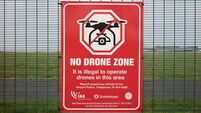Unsolved cases being reviewed after belated conviction
The man who carried out the initial forensic inquiries, following the reopening of the Phyllis Murphy investigation, said a number of unsolved murder cases were being reviewed, although he would not reveal which ones. "They would be unsolved cases where we have items of a forensic nature that could be helpful in light of DNA advances," he said.
It was the development of the advanced method of profiling a DNA sample that eventually led to Crerar being arrested and, along with other evidence, convicted. A blood sample he gave at the time provided the match. At the time, blood samples could only be used to narrow down the number of suspects, as it only went by blood group.













